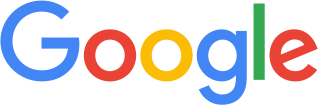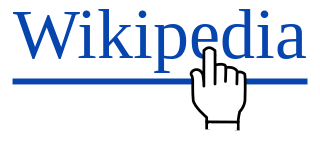Meta elements are tags used in HTML and XHTML documents to provide structured metadata about a Web page. They are part of a web page's head section. Multiple Meta elements with different attributes can be used on the same page. Meta elements can be used to specify page description, keywords and any other metadata not provided through the other head elements and attributes.
Spamdexing is the deliberate manipulation of search engine indexes. It involves a number of methods, such as link building and repeating unrelated phrases, to manipulate the relevance or prominence of resources indexed in a manner inconsistent with the purpose of the indexing system.
A web directory or link directory is an online list or catalog of websites. That is, it is a directory on the World Wide Web of the World Wide Web. Historically, directories typically listed entries on people or businesses, and their contact information; such directories are still in use today. A web directory includes entries about websites, including links to those websites, organized into categories and subcategories. Besides a link, each entry may include the title of the website, and a description of its contents. In most web directories, the entries are about whole websites, rather than individual pages within them. Websites are often limited to inclusion in only a few categories.
Search engine optimization (SEO) is the process of improving the quality and quantity of website traffic to a website or a web page from search engines. SEO targets unpaid traffic rather than direct traffic or paid traffic. Unpaid traffic may originate from different kinds of searches, including image search, video search, academic search, news search, and industry-specific vertical search engines.

On the World Wide Web, a link farm is any group of websites that all hyperlink to other sites in the group for the purpose of increasing SEO rankings. In graph theoretic terms, a link farm is a clique. Although some link farms can be created by hand, most are created through automated programs and services. A link farm is a form of spamming the index of a web search engine. Other link exchange systems are designed to allow individual websites to selectively exchange links with other relevant websites and are not considered a form of spamdexing.

Googlebot is the web crawler software used by Google that collects documents from the web to build a searchable index for the Google Search engine. This name is actually used to refer to two different types of web crawlers: a desktop crawler and a mobile crawler.
Website promotion is the continuing process used by webmasters to improve content and increase exposure of a website to bring more visitors. Many techniques such as search engine optimization and search engine submission are used to increase a site's traffic once content is developed.
A backlink is a link from some other website to that web resource. A web resource may be a website, web page, or web directory.

The anchor text, link label or link text is the visible, clickable text in an HTML hyperlink. The term "anchor" was used in older versions of the HTML specification for what is currently referred to as the a element, or <a>. The HTML specification does not have a specific term for anchor text, but refers to it as "text that the a element wraps around". In XML terms, the anchor text is the content of the element, provided that the content is text.
Keyword stuffing is a search engine optimization (SEO) technique, considered webspam or spamdexing, in which keywords are loaded into a web page's meta tags, visible content, or backlink anchor text in an attempt to gain an unfair rank advantage in search engines. Keyword stuffing may lead to a website being temporarily or permanently banned or penalized on major search engines. The repetition of words in meta tags may explain why many search engines no longer use these tags. Nowadays, search engines focus more on the content that is unique, comprehensive, relevant, and helpful that overall makes the quality better which makes keyword stuffing useless, but it is still practiced by many webmasters.
Search engine marketing (SEM) is a form of Internet marketing that involves the promotion of websites by increasing their visibility in search engine results pages (SERPs) primarily through paid advertising. SEM may incorporate search engine optimization (SEO), which adjusts or rewrites website content and site architecture to achieve a higher ranking in search engine results pages to enhance pay per click (PPC) listings and increase the Call to action (CTA) on the website.
Web content development is the process of researching, writing, gathering, organizing, and editing information for publication on websites. Website content may consist of prose, graphics, pictures, recordings, movies, or other digital assets that could be distributed by a hypertext transfer protocol server, and viewed by a web browser.
The Sandbox effect is a name given to an observation of the way Google ranks web pages in its index. It is the subject of much debate—its existence has been written about since 2004, but not confirmed, with several statements to the contrary.
An SEO contest is a prize activity that challenges search engine optimization (SEO) practitioners to achieve high ranking under major search engines such as Google, Yahoo, and MSN using certain keyword(s). This type of contest is controversial because it often leads to massive amounts of link spamming as participants try to boost the rankings of their pages by any means available. The SEO competitors hold the activity without the promotion of a product or service in mind, or they may organize a contest in order to market something on the Internet. Participants can showcase their skills and potentially discover and share new techniques for promoting websites.
nofollow is a setting on a web page hyperlink that directs search engines not to use the link for page ranking calculations. It is specified in the page as a type of link relation; that is: <a rel="nofollow" ...>. Because search engines often calculate a site's importance according to the number of hyperlinks from other sites, the nofollow setting allows website authors to indicate that the presence of a link is not an endorsement of the target site's importance.

Danny Sullivan is an American technologist, journalist, and entrepreneur. He is the founder of Search Engine Watch in 1997, one of the earliest online publications about search engine marketing. He also launched Search Engine Strategies, one of the earliest search marketing trade shows. After selling both companies in 2006, he co-founded Search Engine Land, another search marketing publication. In 2017, he joined Google as an adviser at the search division of the company.

PageRank (PR) is an algorithm used by Google Search to rank web pages in their search engine results. It is named after both the term "web page" and co-founder Larry Page. PageRank is a way of measuring the importance of website pages. According to Google:
PageRank works by counting the number and quality of links to a page to determine a rough estimate of how important the website is. The underlying assumption is that more important websites are likely to receive more links from other websites.
Google Penguin was a codename for a Google algorithm update that was first announced on April 24, 2012. The update was aimed at decreasing search engine rankings of websites that violate Google's Webmaster Guidelines by using now declared Grey Hat SEM techniques involved in increasing artificially the ranking of a webpage by manipulating the number of links pointing to the page. Such tactics are commonly described as link schemes. According to Google's John Mueller, as of 2013, Google announced all updates to the Penguin filter to the public.
The domain authority of a website describes its relevance for a specific subject area or industry. Domain Authority is a search engine ranking score developed by Moz. This relevance has a direct impact on its ranking by search engines, trying to assess domain authority through automated analytic algorithms. The relevance of domain authority on website-listing in the Search Engine Results Page (SERPs) of search engines led to the birth of a whole industry of Black Hat SEO providers, trying to feign an increased level of domain authority. The ranking by major search engines, e.g., Google’s PageRank is agnostic of specific industry or subject areas and assesses a website in the context of the totality of websites on the Internet. The results on the SERP page set the PageRank in the context of a specific keyword. In a less competitive subject area, even websites with a low PageRank can achieve high visibility in search engines, as the highest ranked sites that match specific search words are positioned on the first positions in the SERPs.
Local search engine optimization is similar to (national) SEO in that it is also a process affecting the visibility of a website or a web page in a web search engine's unpaid results often referred to as "natural", "organic", or "earned" results. In general, the higher ranked on the search results page and more frequently a site appears in the search results list, the more visitors it will receive from the search engine's users; these visitors can then be converted into customers. Local SEO, however, differs in that it is focused on optimizing a business's online presence so that its web pages will be displayed by search engines when users enter local searches for its products or services. Ranking for local search involves a similar process to general SEO but includes some specific elements to rank a business for local search.




